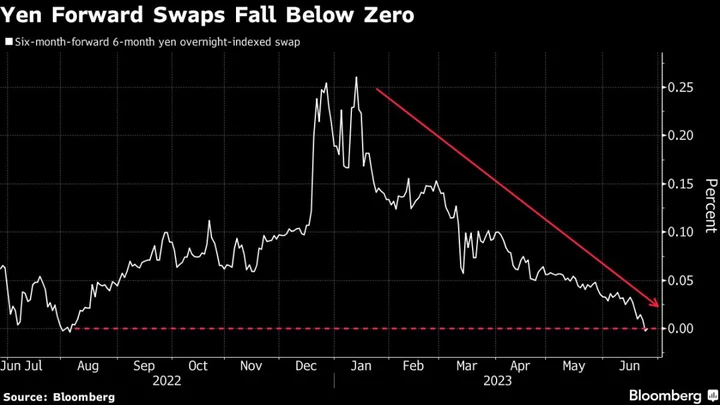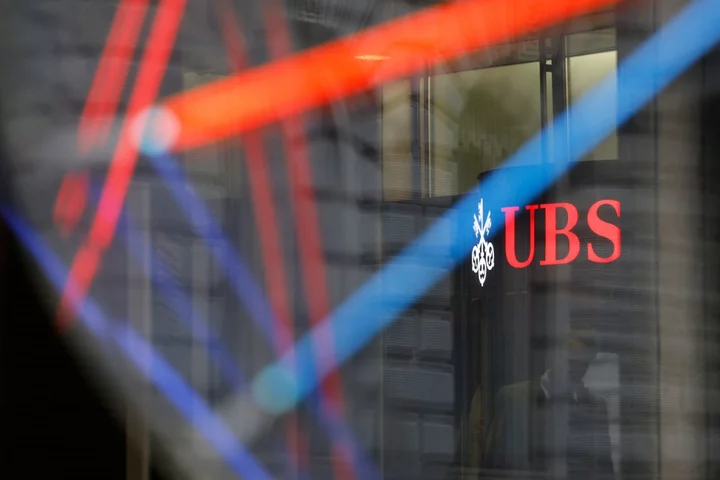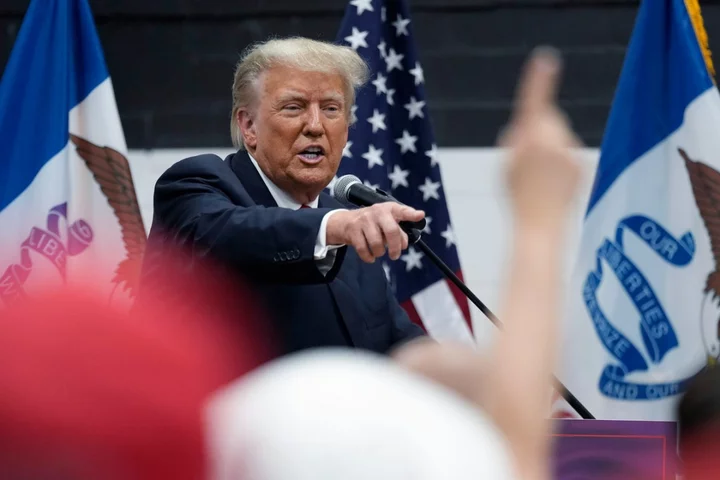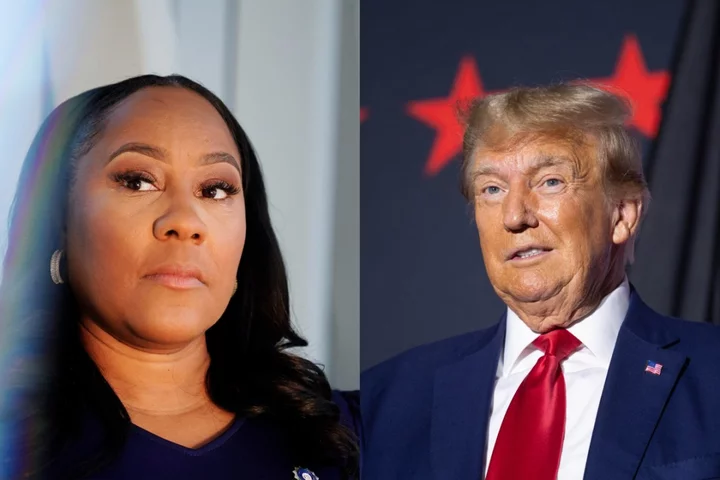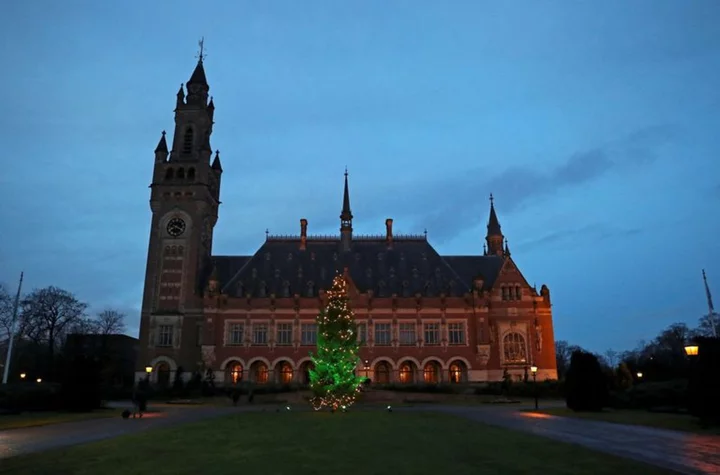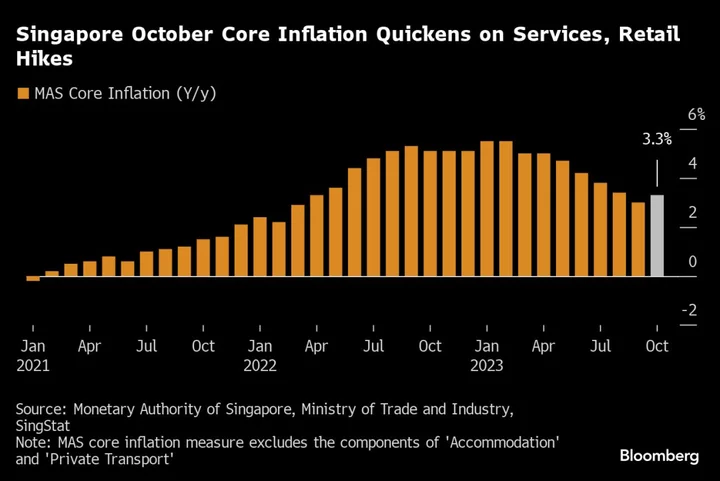Bank of Japan Governor Kazuo Ueda has convinced swap traders that the nation’s negative interest-rate policy will remain in place at least until next year.
That’s what rates markets are signaling, with six-month yen overnight-indexed swaps starting in half a year falling below zero for the first time since August on Friday. Such contracts indicate trader bets that there’s less than an even chance of the BOJ’s policy rate being at positive levels in a year’s time, a reversal from just four weeks ago when they reflected a possible end to the negative-rate policy in 2023.
Pressure is easing on Japan’s central bank to change its policy framework, as the yield curve became less distorted, and indicators for its bond market such as trading volume and bid-ask spreads improved, and wage data showed continued weakness.
Keeping the policy status quo may put further pressure on the yen to depreciate though, at a time when Federal Reserve Chair Jerome Powell is saying one or two more rate hikes may be needed this year, and Japanese officials warn that the local currency’s drop has been rapid.
“The market has been ahead of itself in expecting a hawkish BOJ move,” said Eiichiro Tani, chief strategist at Daiwa Securities Co. in Tokyo. “That turns out to have been a mistake.”
Under its yield-curve-control policy, the BOJ has a minus 0.1% rate on parts of deposits that lenders hold at the central bank, and the central bank caps 10-year sovereign yields at 0.5%.
Ueda said last week that the BOJ will persistently continue with monetary easing, while board member Asahi Noguchi said adjustments to the yield-curve-control program aren’t needed for the time being. The swap-market bets are in line with more than half of economists surveyed by Bloomberg that see the central bank keeping the negative-rate policy at least until the end of next year.

